- Home
- Bruce Sterling
The Dead Media Notebook Page 2
The Dead Media Notebook Read online
Page 2
This edition edited (2015) by Tom Whitwell [email protected]
Contributors:
John Aboud, James Agenbroad, Joel Altman, Mike Antman, Lars-Erik Astrom, Richard Barbrook, Eleanor J. Barnes, Ron Bean, Steven Black, Trevor Black, Trevor Blake, Nicholas Bodley, George H. Brett II, Stephen P. Brown, Adrian Bruch, Bill Burns, Rich Burroughs, Ted Byfield, Ian Campbell, David Casacuberta, Roberto de Sousa Causo, Lauri Christopher Gardner, M. E. Crane, Bill Crawford, Charles Crouch, Frank Davis, Melissa Dennison, Julian Dibbell, Richard Dorsett, Philip Downey, George Dyson, Paul Di Filippo, Micz Flor, Gary Gach, David Galbraith, David F. Gallagher, William Gibson, Carl Guderian, Matt Hall, Mark Hayhurst, Stephen Herbert, Peter van Heusden, Tom Howe, Dan Howland, Richard Inzero, Bill Jacobs, Tom Jennings, Stefan Jones, John K. Fitzpatrick, Richard Kadrey, Manoj Kasichainula, Mike Kelley, Patrick I. LaFollette, Greg Langille, Suzanna Layton, Pat Lichty, Patrick Lichty, Paul Lindemeyer, Eric Mankin, Aaron Marcus, Martin Minow, Nick Montfort, Morbus, Bob Morris, Dave Morton, David Morton, Bradley O'Neill, Bradley O'Neill, Adam O'Toole, A. Padgett Peterson, Tom Perera, John Perry Barlow, Damien Peter Sutton, Soeren Pold, Matthew Porter, Jonathan Prince, Marcus J Ranum, Dan Rabin, George Raicevich, Darryl Rehr, Greg Riker, Derek Robinson, Marcus L. Rowland, Deac Rossell, Matthew Rubenstein, Jack Ruttan, Colin Savage, Larry Schroeder, Mark Schubin, L. Seth Hammond, Brett Shand, Geoffrey Shea, Andrew Siegel, Mark Simpkins, Robert Spaun, Bruce Sterling, Candi Strecker, Charles Stross, Jim Thompson, Paul Tough, Albin Wagner, Bill Wallace, Dave Walsh, Alan Wexelblat, Thomas Weynants.
Cover: Edison’s Electric Pen, from Patent 196747, November 1877
How this book was produced:
1. I scraped the numerical index of deadmedia.org using the Scraper extension for Google Chrome to produced a list of URLs for every article.
2. To download the full HTML for each article I used Refine. Using ‘Add Column based on this column’ I was able to to separate the relevant fields into columns in a spreadsheet. For example, value.parseHtml().select("b")[1].innerHtml().split("(")[1].split(")")[0] returns the author byline for the majority of notes.
3. This spreadsheet (500+ entries with columns for headline, source, byline, body copy) was then edited by hand in Google Sheets, to remove personal emails, dead URLs, strange line-lengths and broken formatting.
4. I then used Mail Merge in Microsoft Word to create the book as a catalogue of the spreadsheet, applying styles for headlines, bylines and so on. The Word document was then hand-edited to add paragraph breaks, rewrite headlines and re-order the notes.
5. The word document was fed into Calibre to be turned into a .mobi file.
Thanks to schoolofdata.org for the scraping method, and to Tom Jennings for maintaining a very neat site.
What is this book?
In 1995, Bruce Sterling issued a challenge; “I'll personally offer a CRISP FIFTY-DOLLAR BILL for the first guy, gal, or combination thereof to write and publish THE DEAD MEDIA HANDBOOK.”
The handbook would be “a book about media that have died on the barbed wire of technological advance, media that didn't make it, martyred media, dead media… a rich, witty, insightful, profusely illustrated, perfect bound, acid-free-paper coffee-table book… by some really with-it, cutting-edge early-21st century publisher. The kind of book that will appear in seventeen different sections of your local chain store: Political Affairs, Postmodern Theory, Computer Science, Popular Mechanics, Design Studies, the coffee table art book section, the remainder table.”
Bruce appealed for help collecting stories and notes about dead media, and over the next five years, notes and suggestions accumulated at deadmedia.org.
But the book never happened. The website has survived, gradually succumbing to link-rot as the Internet evolved and grew around it.
Twenty years later, Bruce’s idea is more relevant than ever. As Benedict Evans said “For the first time ever, the tech industry is selling not just to big corporations or middle-class families but to four fifths of all the adults on earth - it is selling to people who don’t have mains electricity or running water and substitute spending on cigarettes for mobile.”
The history of media is impossibly rich. For every cranky stillborn idea (“when the real hair wig on the crown of her hinged head was lifted up it contained a turntable for playing 3 1/2 inch records!”) there were successful media, around which industries were built, fortunes made and societies transformed, now lost completely.
This collection is not The Dead Media Handbook. It is simply a lightly edited collection of those nearly 500 notes and contributions. Inside, you’ll find lists of early home computers, speculations about the multi-dimensional mental images created by Peruvian knotted-string books, details of Timothy Leary’s experiential typewriter and a lengthy analysis of the Magic Lantern peripherals market.
I have clarified headlines and amalgamated a few entries and trimmed a few lengthy discussions of late ‘90s Internet and video game minutiae. You may be disappointed that I removed the nine-page list of dead mainframe computer serial numbers, but rest assured it is still available at deadmedia.org/notes/0/006.html
I also took out all the meta-discussion about “Is this dead?” and “Is this media?”. The only question I asked while editing was “Is this interesting?”
There were various attempts to categorise the notes; by chronology, by type of media. These would make sense in a printed reference book, but this collection is in the order that notes were added to the archive, lightly shuffled to make sure there’s lots of good stuff at the beginning.
It opens with Bruce’s first post about Peruvian knotted-string books and closes with a note about the Martian data from the Viking Landers “written in a format so old that the programmers who knew it had died.”
This collection feels like a long rambling conversation. Each time you turn the page, you never know what you’re going to get. Enthusiasms appear, are expanded or dropped. If you enjoy something, keep reading and it will probably return. If you get bored, skip a few pages and you’ll find something unexpected.
Thanks to Bruce for letting me publish this collection, and to all the contributors who made the project possible.
Tom Whitwell
Herne Hill, London
January 2015
[email protected]
The DEAD MEDIA Project: A Modest Proposal and a Public Appeal
by Bruce Sterling, 1995
Ever notice how many books there are about the Internet these days? About 13,493 so far, right? And how about "multimedia?" There are 8,784 books on this topic, even though no one has ever successfully defined the term. CD-ROM -- is there a single marketable topic left that hasn't been shovelwared into the vast digital mire that is CD-ROM? And how about the "Information Superhighway" and "Virtual Reality"? Every magazine on the planet has done awestruck vaporware cover stories on these two consensus-hallucinations.
Our culture is experiencing a profound radiation of new species of media. The centralized, dinosaurian one- to-many media that roared and trampled through the 20th century are poorly adapted to the postmodern technological environment. The new media environment is aswarm with lumbering toothy digital mammals. It's all lynxes here, and gophers there, plus big fat venomous webcrawlers, appearing in Pleistocene profusion.
This is all well and good, and it's lovely that so many people are paying attention to this. Nothing gives me greater pleasure as a professional garage futurist than to ponder some weird new mutant medium and wonder how this squawking little monster is going to wriggle its way into the interstices between human beings. Still, there's a difference between this pleasurable contemplation of the technological sublime and an actual coherent understanding of the life and death of media. We have no idea in hell what we are doing to ourselves with these new media technologies, and no consistent way even to discuss the subject. Something constructive ought to be done about this situation.
I can't do much about it, p
ersonally, because I'm booked up to the eyeballs until the end of the millennium. So is my good friend Richard Kadrey, author of the COVERT CULTURE SOURCEBOOK. Both Kadrey and myself, however, recently came to a joint understanding that what we'd really like to see at this cultural conjunction is an entirely new kind of book on media. A media book of the dead.
Plenty of wild wired promises are already being made for all the infant media. What we need is a somber, thoughtful, thorough, hype-free, even lugubrious book that honors the dead and resuscitates the spiritual ancestors of today's mediated frenzy. A book to give its readership a deeper, paleontological perspective right in the dizzy midst of the digital revolution. We need a book about the failures of media, the collapses of media, the supercessions of media, the strangulations of media, a book detailing all the freakish and hideous media mistakes that we should know enough now not to repeat, a book about media that have died on the barbed wire of technological advance, media that didn't make it, martyred media, dead media. THE HANDBOOK OF DEAD MEDIA. A naturalist's field guide for the communications paleontologist.
Neither Richard Kadrey nor myself are currently in any position to write this proposed handbook. However, we both feel that our culture truly requires this book: this rich, witty, insightful, profusely illustrated, perfectbound, acid-free-paper coffee-table book, which is to be brought out, theoretically, eventually, by some really with-it, cutting-edge early-21st century publisher. The kind of book that will appear in seventeen different sections of your local chainstore: Political Affairs, Postmodern Theory, Computer Science, Popular Mechanics, Design Studies, the coffeetable artbook section, the remainder table -- you know, whatever.
It's a rather rare phenomenon for an established medium to die. If media make it past their Golden Vaporware stage, they usually expand wildly in their early days and then shrink back to some protective niche as they are challenged by later and more highly evolved competitors. Radio didn't kill newspapers, TV didn't kill radio or movies, video and cable didn't kill broadcast network TV; they just all jostled around seeking a more perfect app.
But some media do, in fact, perish. Such as: the phenakistoscope. The teleharmonium. The Edison wax cylinder. The stereopticon. The Panorama. Early 20th century electric searchlight spectacles. Morton Heilig's early virtual reality. Telefon Hirmondo. The various species of magic lantern. The pneumatic transfer tubes that once riddled the underground of Chicago. Was the Antikythera Device a medium? How about the Big Character Poster Democracy Wall in Peking in the early 80s?
Never heard of any of these? Well, that's the problem. Both Kadrey and I happen to be vague aficionados of this field of study, and yet we both suspect that there must be hundreds of dead media, known to few if any. It would take the combined and formidable scholarly talents of, say, Carolyn "When Old Technologies Were New" Marvin and Ricky "Learned Pigs and Fireproof Women" Jay to do this ambitious project genuine justice. Though we haven't asked, we kinda suspect that these two distinguished scholars are even busier than me and Kadrey, who, after all, are just science fiction writers who spend most of our time watching Chinese videos, reading fanzines and making up weird crap.
However. We do have one, possibly crucial, advantage. We have Internet access. If we can somehow convince the current digital media community-at-large that DEAD MEDIA is a worthwhile project, we believe that we may be able to compile a useful public-access net archive on this subject. We plan to begin with the DEAD MEDIA World Wide Web Page, on a site to-be-announced. Move on, perhaps, to alt.dead.media. Compile the Dead Media FAQ. We hope to exploit the considerable strengths of today's cutting-edge media to create a general public- domain homage to the media pioneers of the past.
Here's the deal. Kadrey and I are going to start pooling our notes. We're gonna make those notes freely available to anybody on the Net. If we can get enough net.parties to express interest and pitch in reports, stories, and documentation about dead media, we're willing to take on the hideous burdens of editing and system administration -- no small deal when it comes to this supposedly "free" information.
We both know that authors are supposed to jealously guard really swell ideas like this, but we strongly feel that that just ain't the way to do a project of this sort. A project of this sort is a spiritual quest and an act in the general community interest. Our net heritage belongs to all netkind. If you yourself want to exploit these notes to write the DEAD MEDIA HANDBOOK -- sure, it's our "idea," our "intellectual property," but hey, we're cyberpunks, we write for magazines like BOING BOING, we can't be bothered with that crap in this situation. Write the book. Use our notes and everybody's else's. We won't sue you, we promise. Do it. Knock yourself out.
I'll go farther, ladies and gentlemen. To prove the profound commercial potential of this tilt at the windmill, I'll personally offer a CRISP FIFTY-DOLLAR BILL for the first guy, gal, or combination thereof to write and publish THE DEAD MEDIA HANDBOOK. You can even have the title if you want it. Just keep in mind that me and Kadrey (or any combination thereof) reserve the right to do a book of our own on the same topic if you fail to sufficiently scratch our itch. The prospect of "competition" frightens us not at all. It never has, frankly. If there's room for 19,785 "Guide to the Internet" books, there has got to be room for a few useful tomes on dead media.
Think of it this way. How long will it be before the much-touted World Wide Web interface is itself a dead medium? And what will become of all those billions of thoughts, words, images and expressions poured onto the Internet? Won't they vanish just like the vile lacquered smoke from a burning pile of junked Victrolas? As a net.person, doesn't this stark realization fill you with a certain deep misgiving, a peculiarly postmodern remorse, an almost Heian Japanese sense of the pathos of lost things? If it doesn't, why doesn't it? It ought to.
Speaking of dead media and mono no aware -- what about those little poems that Lady Murasaki used to write and stick inside cleft sticks? To be carried by foot- messager to the bamboo-shrouded estate of some lucky admirer after a night's erotic tryst? That was a medium. That medium was very alive once, a mainstay of one of the most artistically advanced cultures on earth. And isn't it dead? What are we doing today that is the functional equivalent of the cleft sticks of Murasaki Shikibu, the world's first novelist? If we ignore her historical experience, how will we learn from our own?
Listen to the following, all you digital hipsters. This is Jaqueline Goddard speaking in January 1995. Jacqueline was born in 1911, and she was one of the 20th century's great icons of bohemian femininity. Man Ray photographed her in Paris in 1930, and if we can manage it without being sued by the Juliet Man Ray Trust, we're gonna put brother Man Ray's knock-you-down-and-stomp-you- gorgeous image of Jacqueline up on our vaporware Website someday. She may be the patron saint of this effort.
Jacqueline testifies: "After a day of work, the artists wanted to get away from their studios, and get away from what they were creating. They all met in the cafes to argue about this and that, to discuss their work, politics and philosophy.... We went to the bar of La Coupole. Bob, the barman, was a terrible nice chap... As there was no telephone in those days everybody used him to leave messages. At the Dome we also had a little place behind the door for messages. The telephone was the death of Montparnasse."
"The telephone was the death of Montparnasse." Mull that Surrealist testimony over a little while, all you cafe-society modemites. Jacqueline may not grok TCP/IP, but she has been there and done that. I haven't stopped thinking about that remark since I first read it. For whom does the telephone bell toll? It tolls for me and thee -- sooner or later.
Can you help us? We wish you would, and think you ought to.
THE DEAD MEDIA NOTEBOOK
Compiled by Bruce Sterling, Richard Kadrey, Tom Jennings
This edition edited by Tom Whitwell
1995-2015
the Inca Quipu
From Bruce Sterling
“A quipu is a collection of cords with knots tied
in them. The cords were usually made of cotton, and they were often dyed one or more colors. When held in the hands, a quipu is unimpressive; surely, in our culture, it might be mistaken for a tangled old mop.
“Quipus probably predate the coming to power of the Incas. But under the Incas, they became part of statecraft.
“There are several extremely important properties of quipus. First of all, quipus can be assigned horizontal direction. Quipumakers knew which end was which; we will assume that they start at the looped aends and proceed to the knotted ends. Quipus can also be assigned vertical direction. Pendant cords and top cords are vertically opposite to each other with pendant cords considered to go downward and top cords upward.
“Quipus have levels. Cords attached to the main cord are on one level; theur subsidiaries form a second level. Subsidiaries to these subsidiaries form a third level, and so on. Quipus are made of cords and spaces between cords. Larger or smaller spaces between cords are an intentional part of the overall construction.
“As well as having a particular placement, each cord has a color. Color is fundamental to the symbolic system of the quipu. Basically, the quipumaker designed each quipu using color coding to relate some cords together and to distinguish them from other cords.
“Additional cord colors were created by spinning the colored yarns together. Two solid colors twisted together gives a candy cane effect, two of these twisted together using the opposite twist direction gives a mottled effect, and the two solid colors can be joined so that part of the cord is one color and the rest of it is another color.
“For the most part, cords had knots tied along them and the knots represented numbers. But we are certain that before knots were tied in the cords, the entire blank quipu was prepared. The overall planning and construction of the quipu was done first, including the types of cord connections, the relative placement of cords, the selection of cord colors, and even individual decorative finishings.

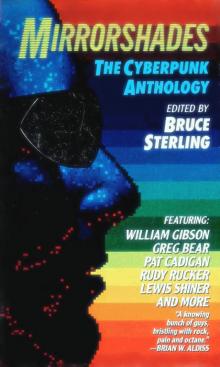 Mirrorshades: The Cyberpunk Anthology
Mirrorshades: The Cyberpunk Anthology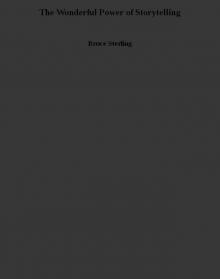 The Wonderful Power of Storytelling
The Wonderful Power of Storytelling Love Is Strange (A Paranormal Romance)
Love Is Strange (A Paranormal Romance)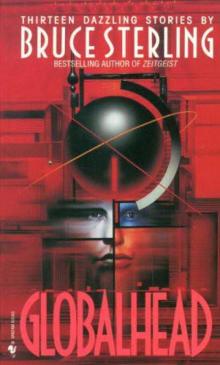 Globalhead
Globalhead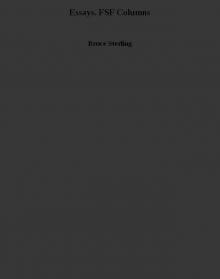 Essays. FSF Columns
Essays. FSF Columns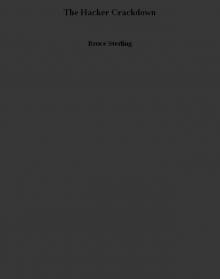 The Hacker Crackdown
The Hacker Crackdown Bicycle Repairman
Bicycle Repairman Black Swan
Black Swan Crystal Express
Crystal Express Islands in the Net
Islands in the Net Pirate Utopia
Pirate Utopia GURPS' LABOUR LOST
GURPS' LABOUR LOST The Dead Media Notebook
The Dead Media Notebook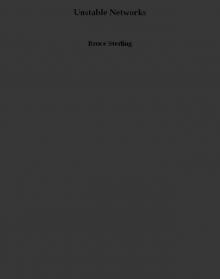 Unstable Networks
Unstable Networks The Manifesto of January 3, 2000
The Manifesto of January 3, 2000 Heavy Weather
Heavy Weather Involution Ocean
Involution Ocean The Epic Struggle of the Internet of Things
The Epic Struggle of the Internet of Things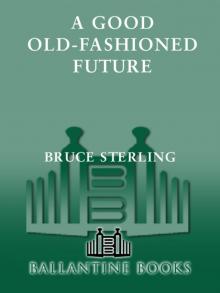 A Good Old-Fashioned Future
A Good Old-Fashioned Future The Littlest Jackal
The Littlest Jackal Zeitgeist
Zeitgeist Totem Poles
Totem Poles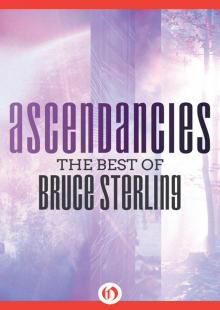 Ascendancies
Ascendancies CyberView 1991
CyberView 1991 War Is Virtual Hell
War Is Virtual Hell Taklamakan
Taklamakan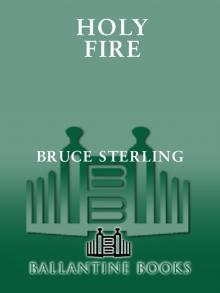 Holy Fire
Holy Fire Cyberpunk in the Nineties
Cyberpunk in the Nineties Schismatrix Plus
Schismatrix Plus The Artificial Kid
The Artificial Kid Essays. Catscan Columns
Essays. Catscan Columns Maneki Neko
Maneki Neko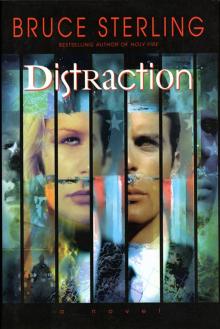 Distraction
Distraction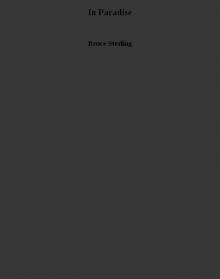 In Paradise
In Paradise Red Star, Winter Orbit
Red Star, Winter Orbit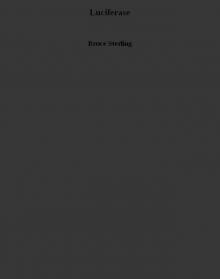 Luciferase
Luciferase